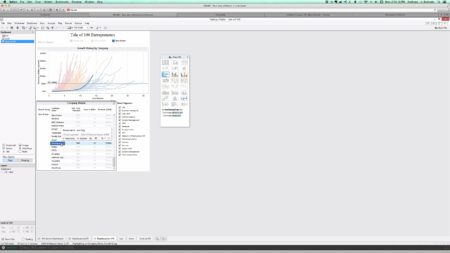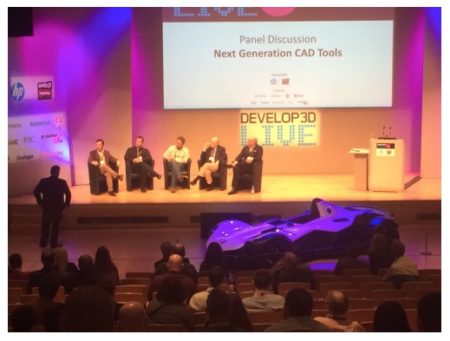There is a new-ish company out there called Frame, with a product of the same name. The Menlo Park-based startup has raised more than $2 million dollars of investment funds to establish a platform that opens the doors to architects, engineers, scientists and others who need access to heavy-duty graphics applications that today only run on Windows PCs.
Much like OTOY and Autodesk’s partnership with cloud-based AWS (Amazon Web Services) streamed applications, Frame leverages the same core technology breakthroughs that are making all of this possible now.
Learning About Frame
Here’s the basics of Frame. Run desktop applications in the cloud and access them from your browser from numerous devices—no plugins required.

01 – Frame allows any Windows software to run through a web browser on all modern operating systems (HTLM5, etc) at remarkable speeds, leveraging elastic compute, GPU grids, and 100x faster internet upload times.
Frame runs your Windows-based apps from their powerful servers in the cloud and delivers the user interface to your client’s browser as a video stream. Just like our discussion with OTOY, what is happening is the client-side computer’s mouse and keyboard commands are sent swiftly back, in Frame’s case, to the Frame Visual Cloud. All in real time. The real computing is happening up in the cloud.
The Technicals
On the browser side you simply need a “modern” browser, one that supports open industry standards. Such a browser will support HTML5 and other key technologies, presumably WebGL. Safari, Chrome, Firefox, and Opera all on a modern Mac will do just fine.
With just a 3 Mbps Internet connection (much slower than the 30 Mbps this author has at home) you get an amazing 60 frames per second stream. For your cloud hard drive you use something like Dropbox, Box or another cloud storage service. And here’s a really cool thing. Apps on Frame can access these cloud storage devices on massive 600 Mbps pipes—100x faster than the average upstream connection.

02 – Frame’s CEO Nikola Bozinovic was up on stage with CAD heavyweights from SolidWorks, OnShape, Autodesk and Kenesto. Frame was also exhibited at the conference.
From within Frame you install your Windows apps. There is also a featured Frame App Store. Things are totally elastic and you can scale up during peak times and back down due sleeping hours.
An important thing to realize is that these are stateless systems. At no time does your data stay on Frame Servers other than when you are using it. All your data rests in cloud storage services.
Other Notables
The Frame folks were at Develop3D Live in the UK last week. And of course everyone was talking about it, according to their blog. Why the buzz? Some key facts that may astonish folks is that running CAD apps via Frame on Amazon’s latest cloud tech means having access to 16 CPU cores, 64 GB of memory and over 6,000 CUDA cores across 4 NVIDIA GPUs.
Frame is the technology that is behind Siemens’ SolidEdge cloud-distribution solution at the moment. Folks are testing out running SolidWorks on the Macbook Air using Frame, and apparently loving it.
What’s really interesting to note is a comment we saw on the Frame blog. Check this out:
“I’m so tired of lugging around my workstation-class mega-laptop on customer site visits—this will be great.”
Perhaps now Apple’s latest Macbook is making a bit more sense. Perhaps now Apple’s latest Macbook is going to make even more sense if the company itself is planning on tapping the power of the cloud like companies like Frame and OTOY are clearly doing. My first thought with the new Macbook was—”why so underpowered?” I get the less is more thing when it comes to mobile computing but how far does one go when users need real power too?
Now that new Macbook—which you can get in gold—is looking kinda sexy in a CAD in the cloud kind of way.
To learn more about Frame go here.
Architosh Analysis
While we were not there in the UK for Develop3D Live, the event conference’s videos are now up for folks to check out the great presentations and panel discussions. The theme was clearly centered on CAD in the cloud. In fact, that is clearly the vortex of the CAD world—at least in MCAD—this year.
Time and time again, in these conferences and presentations about CAD in the cloud, what you see and hear is that users want freedom to access and work on their data anywhere, at anytime, on any device. This A-cubed phrase is starting to form into marketing mantra and the very definition of a MVP (minimum viable product) for the 21st century CAD market. To their credit, Autodesk jumped into the lead with this push, while key technology players like OTOY and Amazon saw the importance of this even years before.
With the presence of Frame, OTOY, OnShape, Amazon Web Services elastic compute technology, and all similar technology that is making traditional OS platforms somewhat pointless on the consumption side, one wonders what changes will unfold just beyond the bend? How will developers start to think about their development targets? Will developers currently writing for both Mac OS X and Windows suddenly stop developing for OS X and distribute their tools via technologies such as Frame? What will Adobe do?
The answer may be found in looking at how OnShape and Autodesk Fusion 360 are actually coded. Where is Apple is all of this? Will Apple release equivalent technology and enable developers working through their IDE’s (Xcode) and toolkits to do something similar but in the reverse direction? (that is, native Mac/iOS, cloud distribute to Linux, Windows/Android and Windows mobile).



Reader Comments
The entire CAD industry is on the brink of a radical evolution and Frame, formerly MainFrame2, is at the leading edg…https://t.co/gd7CyK4Ite
http://t.co/RZRTDl23an — Really cool technology at @frame is helping CAD/FEA and other Windows apps reach other platforms like Mac, Linux!
RT @architosh: http://t.co/RZRTDl23an — Really cool technology at @frame is helping CAD/FEA and other Windows apps reach other platforms l…
The entire CAD industry is on the brink of a radical evolution and Frame, formerly MainFrame2, is at the leading edg…https://t.co/gd7CyK4Ite
http://t.co/RZRTDl23an — Really cool technology at @frame is helping CAD/FEA and other Windows apps reach other platforms like Mac, Linux!
RT @architosh: http://t.co/RZRTDl23an — Really cool technology at @frame is helping CAD/FEA and other Windows apps reach other platforms l…
Menlo Park based Frame aims to bring entire CAD industry to Cloud—Hence Mac and More! https://t.co/hkhA8oNjOb via @architosh
Menlo Park based Frame aims to bring entire CAD industry to Cloud—Hence Mac and More! https://t.co/hkhA8oNjOb via @architosh
Comments are closed.